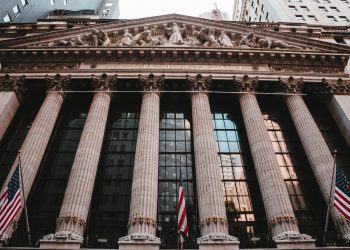Plastics have become such a common part of our daily lives. We use it to make everything from packaging to cups to car components. Unfortunately, it’s now quite common in the natural environment as well. 8 million metric tons of plastic ends up in the ocean every year, and more litters the land. In addition to the easily visible plastic items in the natural environment, there’s also a large number of microplastics — pieces of plastic five millimeters long or smaller.
Some microplastics are manufactured, but many of them are formed by larger pieces of plastic slowly breaking down into smaller and smaller pieces. Microplastics can come from plastic consumer items, synthetic fibers, paint dust, tire dust and other sources.
Microplastics are widespread, especially in water. In fact, microplastics exist in nearly every water system in the world, according to the Earth Day Network. Marine life ingests these tiny bits of plastic, and when people eat those marine animals, they ingest the plastic as well. Microplastics have also found their way into our drinking water. In the U.S., approximately 94 percent of tap water and 93 percent of bottled water have microplastics in them.
Research
is ongoing into the impacts of microplastics on the environment and human
health. Studies have shown that they harm marine life, but we need
more research to determine how they might impact human health as well as the health of the environment. One
thing’s for sure though — they’re littering our water and our land. How we can
stop these contaminants from getting into our environment?
Research is ongoing into the impacts of microplastics on the environment and human health. Studies have shown that they harm marine life, but we need more research to determine how they might impact human health as well as the health of the environment. One thing’s for sure though — they’re littering our water and our land. How we can stop these contaminants from getting into our environment?
Reducing Plastic Use
Addressing the root of the problem — the approximately 300 million tons of plastic we produce every year — is the most effective way of stopping plastic pollution. Switching from single-use plastics to reusable items can help. So can finding new materials to substitute for plastics, such as biodegradable, plant-based materials.
Avoiding Microbeads
One common type of manufactured microplastic is the microbead. These tiny plastic beads are found in some products such as soaps and toothpaste. Look for terms like polyethylene and polypropylene on the ingredients list of your cosmetic products to check if they contain microbeads. Today, laws in some countries prohibit adding microbeads to products.
Improving Recycling Rates
Ninety- one percent of plastic does not get recycled. Recycling, however, prevents plastics from ending up littering the environment. So, improving recycling rates by making it easier to recycle and spreading the word about recycling programs can prevent microplastics from entering the environment. On a broader scale, improving recycling technologies could allow more materials to be recycled.
Preventing Littering
On a similar note, preventing littering by spreading awareness of the negative impacts of littering and by enacting and enforcing littering laws can prevent plastics that aren’t recycled from getting into the environment. When someone dumps plastic somewhere, it might eventually break down into microplastics and find its way into water systems.
Improving Textiles
Various synthetic fibers shed tiny plastic fibers, especially when washed. Research is ongoing into ways to improve textiles so that they don’t shed as much. There’s still a lot we don’t know about textiles and microplastic shedding, but potential solutions include applying a protective coating to fibers and switching to biodegradable textiles.
Filtering Fibers
Another way to stop microplastics is to collect them before they enter or re-enter the water system. In regards to washing synthetic clothing, homeowners can use filters and other products to collect fibers that shed from clothing items in the washer. Homeowners can also remove microplastics from their drinking water using products such as carbon block, granular activated carbon and reverse osmosis filters.
Enacting Microplastic Policies
Enacting more laws and regulations, such as those prohibiting microbeads, could help to prevent a microplastic solution. The lack of conclusive scientific evidence related to microplastics is, in many cases, hindering the passing of these laws. More research and support from the public will likely be needed if we are going to pass more microplastic regulations.
Spreading the Word
Lastly,
increasing awareness of the issues surrounding microplastics could, in the long
run, help prevent them from entering the environment. Microplastics don’t get
as much attention as some other pollution problems, but microplastic pollution
is an important issue that we need to learn more about and explore ways to
protect the environment and our health from its potential impacts.

Green Jobs
How to Apply for a Green Job With the demand for green jobs skyrocketing so far in 2017, giving yourself a unique edge can be difficult—yet absolutely necessary—in order for you to become a proud worker for Mother Earth. Follow these steps to successfully claim your next environmentally friendly employment opportunity. 1. Resume: Make sure … Continue reading..



